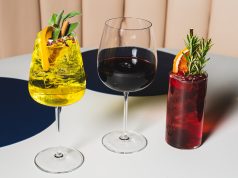
At a recent wine tasting in Boulder, there was a rarity being poured. We were all assured of it. The wine was made from 100 percent bobal grapes, a red varietal that is rarely seen in the U.S. on its own and is often used in blends. It’s mostly grown in Spain, where the leading red grape is tempranillo, but it’s also shown up in Southern France and Sardinia.
Anyway, just because something’s rare doesn’t mean it’s good — and there might as well be a reason why bobal is rarely sold as a single varietal — but then again there wouldn’t be much need to write this piece if it wasn’t worthwhile. But the bobal at this tasting, from Utiel-Requena in Spain, just outside of Valencia, was vibrant and spicy. It was a little hot, with flavors of leather, tobacco, dark cherry and plum. It was straight up purple in color, with medium astringency and acidity for sure. It was good, and more importantly, it was interesting. So I bought a bottle, no doubt sold by its “rarity,” and planned to investigate further.
The most indicative thing about bobal’s taste is, fittingly, the environment in which its grown. Utiel-Requena, where the vast majority of bobal is cultured, has frost issues late into spring, but has extremely warm summers without much rainfall. The growing region gets as high as 3,000 feet. The grape is perfect for that climate, budding later than other varietals (thus avoiding frost and ripening late in the season for extra acidity and raisin sweetness), and thriving in the heat.
What’s more is that bobal’s rarity could soon be a thing of the past. Winemakers in the region, buoyed by the globalization of wine selling and advancements in technology, are focusing on getting the most out of the bobal grape. Winemakers from the region are making more sales calls to the U.S., selling an ancient grape (Utiel-Requena has produced bobal grapes since the 14th century according to some accounts) that just hasn’t had its time in the sun yet. There are 95 wineries currently in the region, and given bobal’s history as a filler grape, prices are low for the discerning consumer. You’ll soon be able to find single varietals of bobal with pre-2010 vintages, a product that wasn’t economical or available for the U.S. market even several years ago.
And best of all is the foundation from which bobal emerges. The vines being cultivated now to produce single varietal bobal wines have been planted for a century or more. Because bobal vines were more resistant to diseases that disrupted Spanish grape production in the mid-19th century, and because they were used so often to be additions to blends and used for rose, there has been a steady need to retain and care for the vines.
Bobal varietals may be hard to come by in the next year or so, but the surge is coming, so be patient. In Europe and other parts of the U.S., you can already snag bottles of bobal for well less than $10. In Colorado, we’re likely to see one or two brands in a comprehensive liquor store for a little more than that for the time being.














